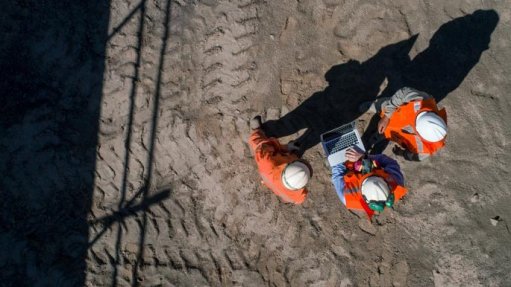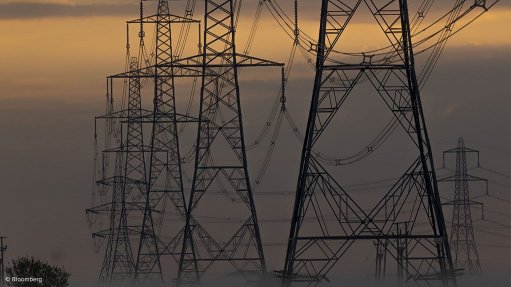South African miners seek tech innovations to address falls-of-ground
The Minerals Council South Africa and the Mandela Mining Precinct (MMP) plan to announce the finalists of an open innovation challenge – championed by Sibanye-Stillwater and Impala Platinum – to identify high-potential innovations for real-time rock hazard identification and loose rock removal in South African mines.
The challenge forms part of the MMP’s Advanced Orebody Knowledge programme, which is aimed at providing mine planners, rock engineers, geologists and other decision-makers with information and knowledge that will contribute to optimal extraction and zero harm objectives.
It also forms part of the Minerals Council’s Elimination of Fall of Ground (FoG) Fatalities Action Plan, which is a holistic approach that encompasses technical and human elements supported by the Department of Mineral Resources and Energy, the Mine Health and Safety Council, as well as organised labour and suppliers.
The action plan, which was approved in July 2021, includes a financial investment of R46-million over five years.
The open innovation challenge, which was first announced on August 12 and which will close on October 12, was an invitation to identify and implement new technology that will enable the development of user-friendly solutions for improving geological confidence at the face, while also making the underground mining environment safer during the removal of loose rocks after blasting and during cleaning before workers enter the area for drilling.
The finalists will be announced in early November.
The challenge seeks to address a two-fold problem – identifying the rock features that could be potentially hazardous and then safely supporting or removing them.
“For FoG safety, statistical analysis revealed a lot of accidents happened during the barring process. This is why we needed to search for whatever technologies, instruments and systems are out there that can help remove loose rock in the safest possible way – preferably remotely, without people being exposed,” Minerals Council safety and sustainable development senior policy analyst Lerato Tsele tells Mining Weekly.
She explains that the business case for the Minerals Council on this project centered on saving lives, adding that Sibanye-Stillwater and Impala Platinum mines have availed themselves to pilot whatever tool or equipment or technology emerges from the challenge.
South African underground, narrow, tabular gold and platinum mines have the highest FoG risks. Intense fracturing often occurs owing to high stresses encountered at depth and the structural complexity of these orebodies.
This fracturing is also exacerbated by the drill-and-blast method that is traditionally practiced in hard-rock narrow reef mines. The combination of faults, joints and shallow-dipping fractures occurring in tabular stopes can compromise the integrity of the hanging wall, resulting in rock mass instabilities.
These instabilities, if untreated, may result in hazardous FoGs. This is why they are typically the target of safe-making and support activities during mining.
The identification and visualization of geological structures and hazards on the face by mining personnel is typically limited to in-person visual and physical examination and the ability to identify hazards and risks ahead of the face are limited.
A new, better leading practice is being sought for frontline workers in hard rock, tabular, underground mining to more accurately identify and visualize hazards relating to rock faults, joints and fractures.
Once unstable and unsafe rocks have been identified, it is necessary to support or remove them safely.
The method of using a pinch bar to sound the rock to establish its integrity and then using it to remove the rock exposes the worker directly to the hazard, not to mention it being physically demanding. A new tool to safely remove a loose rock from the rock mass in a controlled manner is required to ensure zero harm to those tasked with carrying out making safe operations.
Innovations selected to take part in phases 2 and 3 of this programme will be supported financially with up to R1-million of research and development (R&D) funding from the Elimination of FoG Fatalities Action Plan R&D fund.
Finalists will have the opportunity to showcase their technology publicly, receiving significant brand exposure through project and media partners.
Finalists will showcase their solutions at a virtual demo day, helping provide access to key decision-makers in the mining industry, enabling market access and a free platform for innovators to market their solutions to potential clients.
Through the MMP, innovators will be able to test new technologies by using the newly established Industry test mine.
In addition to this test mine, innovators will be provided access to the champion mines for initial testing and piloting, giving them long-term market traction and a business case to sell to other clients within the mining industry.
While the challenge is open to anyone from around the globe, the first prize would be to have a South African-developed solution. However, the primary objective is to find an appropriate solution.
“We are all proudly South African and in support of localisation and development within our country.
“However, if we do find a successful solution from another country, the best thing for us would be to learn from it and actually develop those skills within our communities, to give our people an opportunity to learn and expand,” MMP Advanced Orebody Knowledge programme manager Michelle Pienaar says.
Finalists will showcase their innovations in a virtual or hybrid event, to industry and a panel of judges, in the first week of December, during which the final pitching round will take place with judges.
Research Institute for Innovation and Sustainability engagement manager Alexandra Lugagne explains that the solutions need to be easy to use.
“How can it integrate into the day-to-day usual workflow without adding unnecessary burden? The idea is for it to make the work more efficient and easier to do in terms of doing it safely, not longer and more tedious, given the pressures that mining teams have to deal with already,” she says.
“We are all excited and we wait in anticipation to see what this challenge will bring because we have been struggling for many years with FoGs,” Tsele says.
Comments
Press Office
Announcements
What's On
Subscribe to improve your user experience...
Option 1 (equivalent of R125 a month):
Receive a weekly copy of Creamer Media's Engineering News & Mining Weekly magazine
(print copy for those in South Africa and e-magazine for those outside of South Africa)
Receive daily email newsletters
Access to full search results
Access archive of magazine back copies
Access to Projects in Progress
Access to ONE Research Report of your choice in PDF format
Option 2 (equivalent of R375 a month):
All benefits from Option 1
PLUS
Access to Creamer Media's Research Channel Africa for ALL Research Reports, in PDF format, on various industrial and mining sectors
including Electricity; Water; Energy Transition; Hydrogen; Roads, Rail and Ports; Coal; Gold; Platinum; Battery Metals; etc.
Already a subscriber?
Forgotten your password?
Receive weekly copy of Creamer Media's Engineering News & Mining Weekly magazine (print copy for those in South Africa and e-magazine for those outside of South Africa)
➕
Recieve daily email newsletters
➕
Access to full search results
➕
Access archive of magazine back copies
➕
Access to Projects in Progress
➕
Access to ONE Research Report of your choice in PDF format
RESEARCH CHANNEL AFRICA
R4500 (equivalent of R375 a month)
SUBSCRIBEAll benefits from Option 1
➕
Access to Creamer Media's Research Channel Africa for ALL Research Reports on various industrial and mining sectors, in PDF format, including on:
Electricity
➕
Water
➕
Energy Transition
➕
Hydrogen
➕
Roads, Rail and Ports
➕
Coal
➕
Gold
➕
Platinum
➕
Battery Metals
➕
etc.
Receive all benefits from Option 1 or Option 2 delivered to numerous people at your company
➕
Multiple User names and Passwords for simultaneous log-ins
➕
Intranet integration access to all in your organisation





















